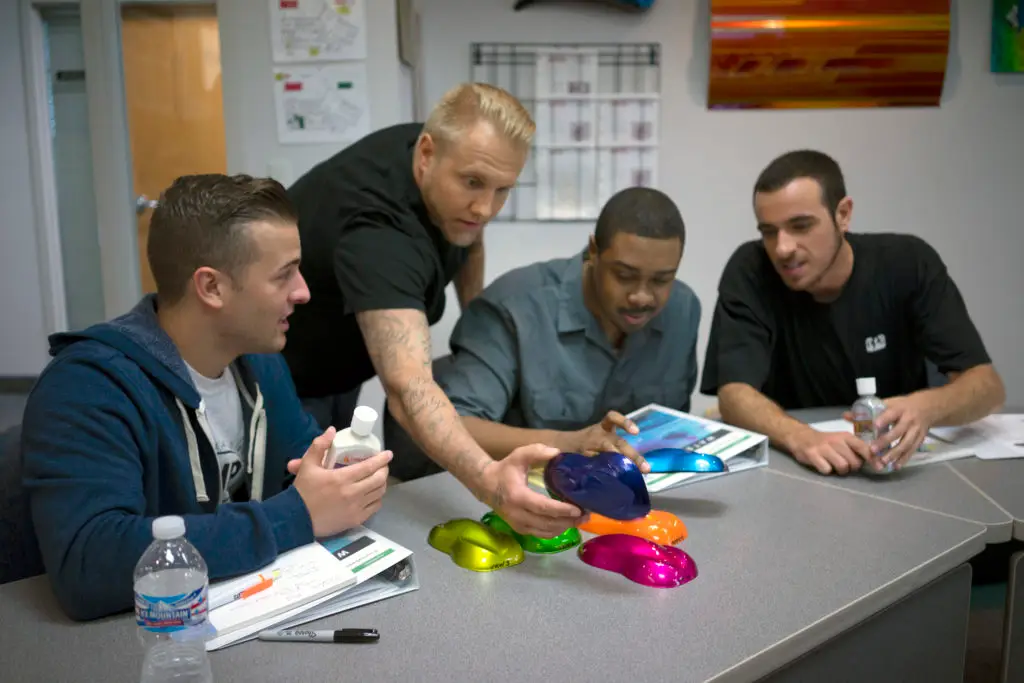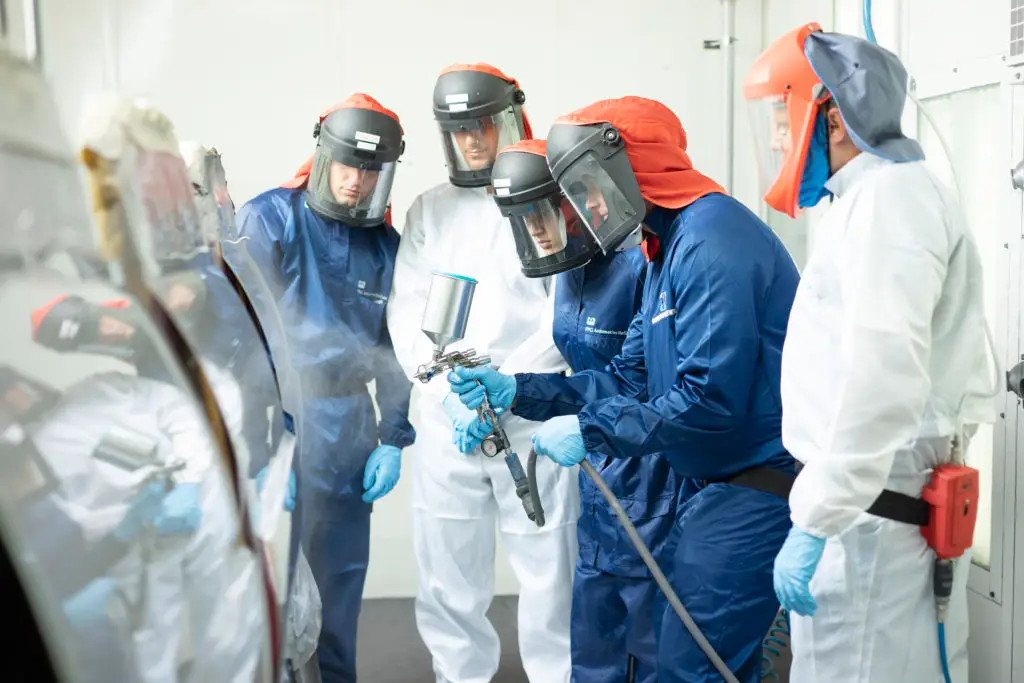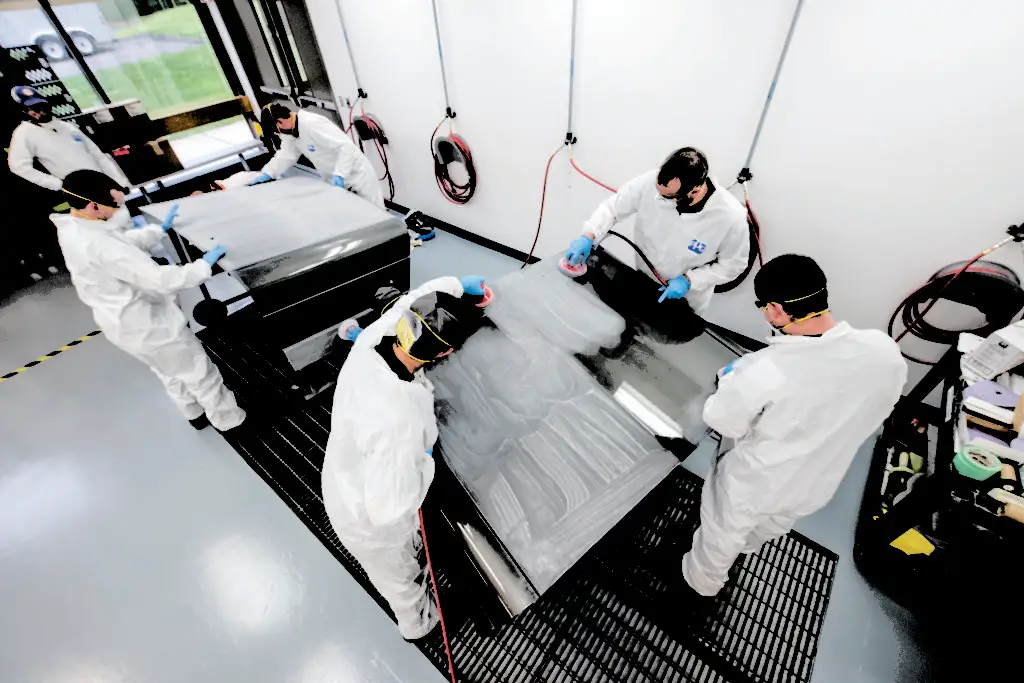It is all about training.
Article and photos courtesy PPG
For today’s automakers, sophisticated finishes and special effect colours are ways to set their vehicles apart and attract new car buyers. Much of this is due to new technology that allows OEM stylists and colour experts to create brilliant new colours and effects—tri-coats, quad-coats, mattes, translucent colours, and more—that were not practical or even possible just a few years ago. Many of the contemporary colours that refinish technicians encounter today, such as Ford Ruby Red and Mazda Soul Red Crystal, have never been seen before in the mass automotive market.
As eye-catching as these new looks are, collision centres face the challenge of accurately matching and repairing these sophisticated colours. It is critical then that paint technicians be up to speed with the latest product innovations, equipment upgrades, and application techniques.
Professional refinish training offered by paint companies is one effective way collision repair centres can keeptheir painters at the top of their game with the ability to recreate cutting-edge factory finishes.
Meeting the challenge
“To stay on top of colour and finish trends, it’s critical that collision centre painters stay current through comprehensive training,” says Norm Angrove, PPG director, Canada. “Ongoing training is not unique to our industry. Any profession that wants to keep up with changes has to provide up-to-date training. We work hard to keep pace with the OEMs. Technicians need to understand how to work with the latest finishes, colours, and the technologies involved to produce them. Proper training—in the classroom and in the spray booth—ensures that technicians have those capabilities. Training is a large part of our investment in our technicians; it’s an investment we’re happy to make.”
Leading automotive refinish companies actively promote training and offer an array of classes to painters of all experience and skill levels. At PPG, for example, classes that cover every aspect of the refinish process are held year-round at company development centers, distributor facilities, and vocational schools.
Most collision centres recognize the advantages that come with training:
- Technicians are up-to-date on the newest technology and products
- Opportunities to improve paint booth cycle time
- Refinish products and processes align with OEM advances
- Enhanced customer satisfaction levels
- Reduced costs, fewer do-overs
In the long run, training offers significant return on investment.
Specialty finishes

Advanced training also addresses the challenge of accurately matching and repairing specialty finishes—the kind that turns heads and leads to second looks. Angrove notes that PPG, for example, provides technicians with training that simplifies the repair of even the most sophisticated finishes. And for technicians using a waterborne refinish system, it is neither a puzzle nor a problem to match these stunning new colours.
Classes taught by expert instructors, often veteran painters themselves,cover a range of key topics:
- Tri-coats, including tinted clears
- Specialty finishes and colour retrieval
- Translucent colours
- Low-gloss (matte) finishes
- Liquid pearls
- Colour tinting
- Blending techniques
Refinish manufacturers are not the only ones focused on training. A recent example of similar support comes from Lexus. The automaker produced a four-minute instructional video to show paint technicians how to easily replicate the company’s Structural Blue finish, an expensive premium colour available only on a limited number (300) of Lexus LC500 models.
Structural Blue uses no blue materials or pigments. The hues are a light effect created by an exclusive liquid coating texture. Depending on the type of light, natural or artificial, and the viewing angle, Structural Blue can appear as an iridescent blue, royal blue, violet or other blue tones. The video was created to dispel the idea that complex colour schemes require a complex refinish process. Angrove points out that because Structural Blue is a sophisticated finish, it may look like it requires a four- or five-stage progression, but it is actually a simple two-stage process that a painter can easily master. The video shows how uncomplicated and straightforward the task is.
In conjunction with the video, PPG provides its painters with OEM factory packs as repair solutions—as it does for other intricate finishes. The factory packs correspond to the OEM specs and quality levels. They are available for waterborne systems and yield an OEM-like finish.

Another sophisticated finish, the 46G Mazda Machine Gray special-effect metallic colour, gives the paint a sculpted-from-solid-steel appearance. The OEM process utilizes an exotic tri-coat system made up of a black colour coat followed by a high-brightness leafing aluminum layer that is topped with a clearcoat. The result is impressive. And it is not difficult to match when painters have access to technical bulletins or a video that demystifies the process through clear, step-by-step instructions.
Certification training
Some refinish suppliers certify technicians in the use of the company’s products. To acquire certification, a technician must take specialized, hands-on training on the paint system they are using. This ensures that the technician gains a high level of competency in using the products. With a certified technician on its staff, a collision centre assures its customers of the painter’s product knowledge and expertise along with the benefit of knowing a repair job will be done properly. With some paint companies, when technicians and their respective collision centres are certified, the centres may qualify to offer a paint guarantee to their customers. The certification translates into customer confidence and adds to a collision centre’s stature.
Certification, however, is not necessarily a one-and-done process. Again using PPG as an example, technicians are required to be recertified every two years to maintain their status and ensure they are current with the latest products, tools, and application procedures.
Similarly, when collision centres seek approval for participating in an OEM’s collision repair program, the OEM will want assurance that the centre’s painters are certified and helps ensure that vehicles are painted to OEM factory standards with the finish restored to pre-accident or pre-damage condition. Meeting the OEM’s standard requires training.
Addressing the technician shortage
Despite the current shortage of refinish technicians, the industry only has room for skilled individuals and those who have the potential to become capable painters. For many painters, learning the refinish process began when they were students in technical school, a community college program, or working through I-CAR or Automotive Training Centre programs. Others may have found their way to the spray booth from another collision centre position. While new technicians acquire a degree of knowledge through these opportunities, additional training is often required to ensure that they are able to competently carry out their responsibilities and become a valued asset in a collision centre.
Recognizing the need to ease new technicians into the refinish process and develop their skills, some companies have introduced programs specifically designed to train newcomers in refinish preparation. The entry-level courses are intended for assistant technicians who have received limited or no formal training and work alongside accomplished body and refinish technicians.
“These ‘prepper’ classes were requested by collision centres,” explained Gregg Whitmer, PPG training manager. “We’ve found that there are many instances in which technicians working in refinish operations were not properly taught how to prepare a vehicle for refinishing. If a car isn’t prepped correctly, work may have to be redone. That negatively affects productivity, efficiency and profitability. The class directly addresses this concern.”
Working with experienced instructors, new technicians develop their skills in substrate cleaning, sanding, masking, and bumper cover and plastic parts preparation. Participants are also taught the importance of keeping a clean and organized shop.
“By training assistant technicians properly at the beginning of their careers, we help put them on the right path for success,” says Whitmer. “After all, training is a continuous process; it’s never complete, especially with the all the changes we see so often in our business. Training programs at all levels—from the new kid just starting out to the seasoned veteran waiting to see what’s next—introduce technicians to the latest products and techniques for completing quality refinish repairs on the most advanced finishes.”
As the refinish industry continues to address advancing OEM finishes, training will become even more important. Those companies and collision centres that recognize the value of keeping technicians current and are willing to make the necessary investment in training will be the companies and technicians that will still be here tomorrow.

